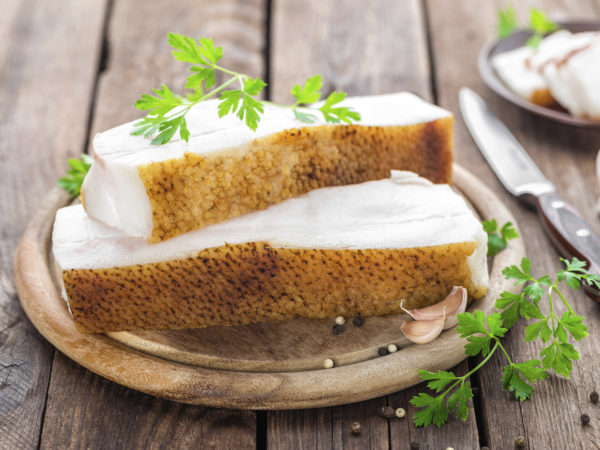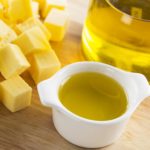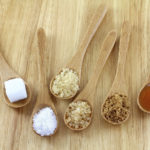Is Lard Healthy?
What’s the story with lard? I thought it was about as bad for you as a fat could be, but recently I’ve been hearing that lard is making a comeback and isn’t so bad for us after all. Really?
Andrew Weil, M.D. | July 10, 2012

Lard is pork fat, and it began to fall out of favor for frying and baking in the early years of the 20th century when Upton Sinclair’s muckraking novel The Jungle exposed conditions in the meatpacking industry. The book included anecdotes of workers who fell into vats of molten pork fat and were sometimes overlooked for days until “all but the bones of them” went out to the world in packages of lard. Sinclair’s book led to the passage of the first pure food and drug laws in the United States and also to the decline of lard in everyday cooking.
In 1911, a few years after Sinclair’s sensational revelations, Crisco was introduced and touted as a healthy alternative. Crisco, like margarine, is a vegetable fat turned into a solid form at room temperature by the process of hydrogenation. This method also creates trans-fatty acids, which we now know increase total cholesterol, raise LDL (“bad”) cholesterol and lower HDL (“good”) cholesterol. These unnatural compounds may also have adverse effects on cell membranes and the immune system, and may promote inflammation, cancer and accelerated aging.
After World War II, consumption of lard along with other animal fats dropped even more thanks to the conventional wisdom of the past 40 years that the saturated fats in our diets were a principal cause of high cholesterol and rising rates of heart disease. More recent research suggests that this isn’t so – a scientific analysis of 21 studies determined that there is no significant evidence that dietary saturated fat is associated with an increased risk of coronary artery disease.
I doubt that the scientific rethinking of the contribution of saturated fat to heart disease is responsible for lard’s re-emergence as an acceptable cooking fat. That is probably due more to the influence of the well-known chefs who have been using it in their restaurants, as well as to recent efforts to preserve dwindling heirloom breeds of pigs and raise them sustainably.
Nutritionally speaking, lard has nearly one-fourth the saturated fat and more than twice the monounsaturated fat as butter. It is also low in omega-6 fatty acids, known to promote inflammation; according to lard enthusiasts free-range pigs that eat greens, not grains, have higher levels of omega-3 fatty acids.
Lard has always been prized as a cooking fat because it has a higher smoking point than other fats. For that reason, foods fried in lard absorb less grease. It also has the reputation of producing ultra-flaky pastry crust.
Cans of lard are available in supermarkets, but most of these products have been hydrogenated so they’ll last longer and are probably not what you want. The best lard is considered to be minimally processed “leaf lard” from the area around the pig’s abdomen and kidneys or fatback lard from the pig’s back. You can get these at high-end specialty markets or online.
Andrew Weil, M.D.









